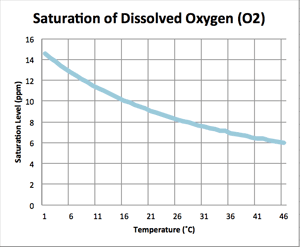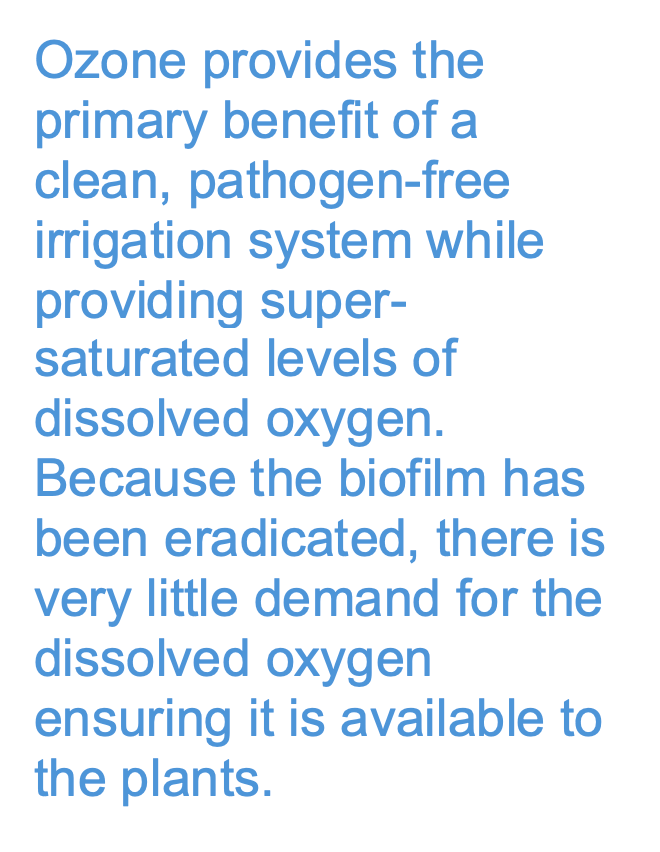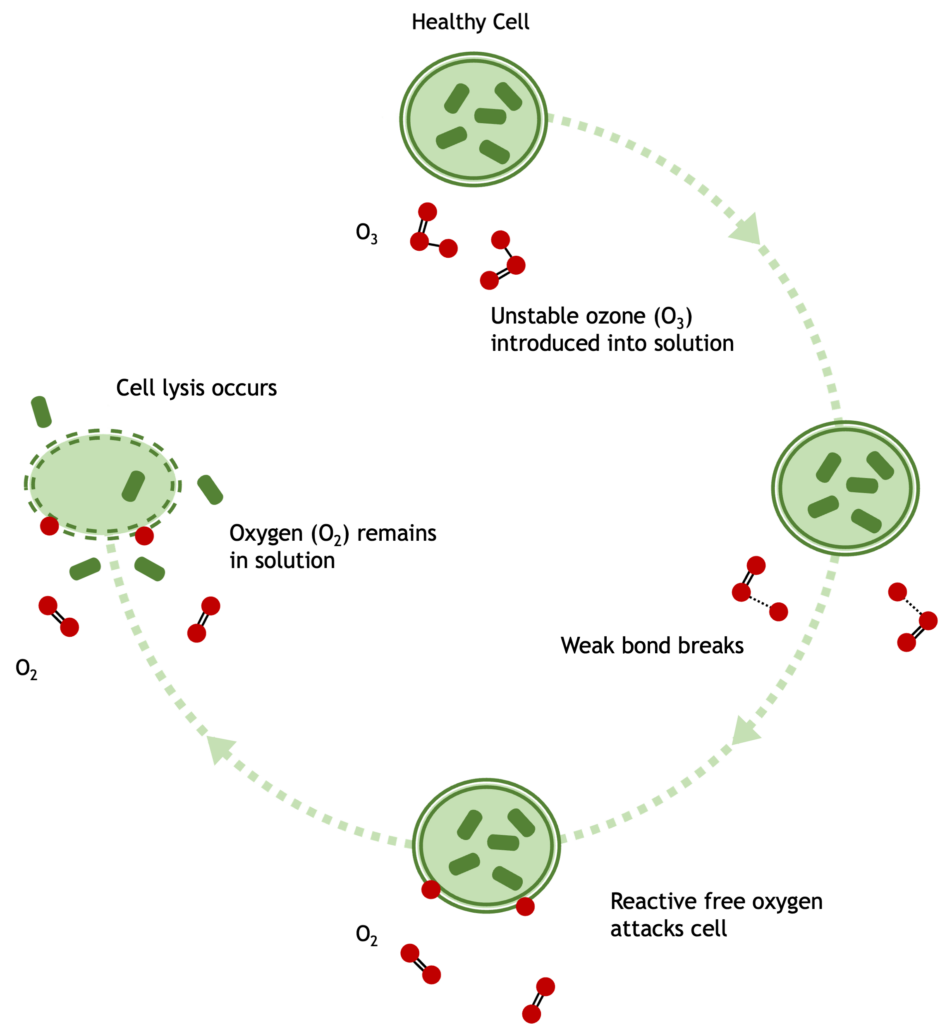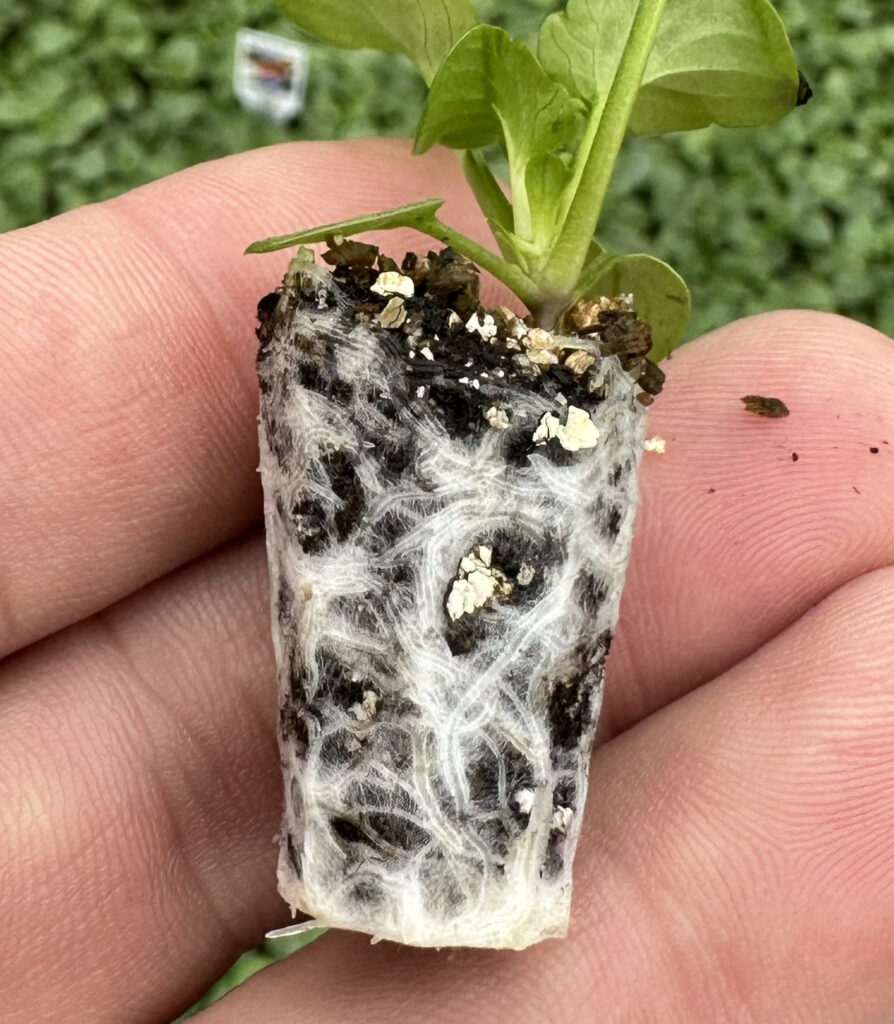Dissolved oxygen (DO) in irrigation water improves root growth and plant health, reducing crop timing and shrink. There are a number of ways to introduce oxygen in the irrigation water. Each way provides benefits to the crop over the short term. However, without proper sanitation, the impact of oxygen supplementation diminishes over time as aerobic biofilms increase, creating a biological oxygen demand (BOD) and using up all of that beneficial oxygen before it reaches the plants.
Dissolved oxygen in water is bound by the same physical laws that govern any gas dissolved in a liquid. Henry’s Law basically states that saturation of a gas in a liquid is pressure and temperature dependent. As the pressure increases, more gas can be dissolved. As the temperature increases, less gas can be dissolved. The graph below shows the saturation level of dissolved oxygen in water at atmospheric pressure.

Increasing the oxygen available in the irrigation water can help plants by encouraging aerobic microorganisms and antagonizing the anaerobic ones – most plant pathogens fall in this category. Higher levels of DO can also help with ion exchange, reduce root rot, and increase root mass, helping the plant with nutrient uptake.
DO levels below 5 ppm can cause issues with plant growth. Nominal levels of 8-10 ppm are needed for basic plant growth.
Super-saturated levels of DO can provide the benefits listed above and by numerous companies all working to supplement oxygen in irrigation water. Faster crop times, improved plant health, and reductions in shrink are all common benefits of super-saturated levels. However, as the name suggests, super-saturation is an extra measure and requires specialized systems and techniques to reach.
Nanobubbles, pressurization systems, chillers that reduce water temperature to increase solubility of oxygen, and other means all work to increase the amount of oxygen in the water available to the plants. None of these provide a very strong sanitation benefit and do not clean the water or the plumbing. However, when these systems are first installed, the immediate increase in DO does impact the biofilm.
Before higher levels of oxygen are added into an irrigation plumbing system, the biofilm will be primarily anaerobic, meaning it thrives without oxygen. Once oxygen is introduced at much higher levels, that anaerobic biofilm suffers. This accounts for the claims that some DO systems eliminate biofilms.
Over time, the dead anaerobic biofilm will be replaced by an aerobic, oxygen loving, biofilm. Once this occurs, this new aerobic biofilm will begin to use the oxygen added to the water, reducing the amount that is available to the plants. As the biofilm grows, so will this oxygen demand.
To ensure that DO remains a strong benefit to the crop, proper sanitation must be employed to eliminate the biofilms altogether.
Instead of bubbles and pressurization, Dramm uses ozone as our primary water sanitation tool. Ozone is the strongest oxidizer available and is very reactive. It is one of the best tools for pathogen and biofilm control in water systems.


Additionally, ozone has another great benefit for plants. Ozone is triatomic oxygen, or O3. It is also 12.5 times more soluble in water than O2, meaning that we can dissolve a lot more O3 at normal temperatures and pressures than we can O2.
When injected into a water system, highly unstable ozone molecules break apart. This reaction sanitizes the water. Upon breaking, the O3 molecules revert to a more stable O2. As the molecules are in solution already, they remain dissolved until depressurized for a period of time.
Ozone provides the primary benefit of a clean, pathogen-free irrigation system while providing super-saturated levels of dissolved oxygen. Because the biofilm has been eradicated, there is very little demand for the dissolved oxygen, ensuring it is available to the plants.
The Dramm Team can help you improve the health and quality of both your water and your plants. A complete system can remove particulate, pathogens, and biofilm all while providing super-saturated levels of dissolved oxygen to help plant growth. Let us know how we can help you.

